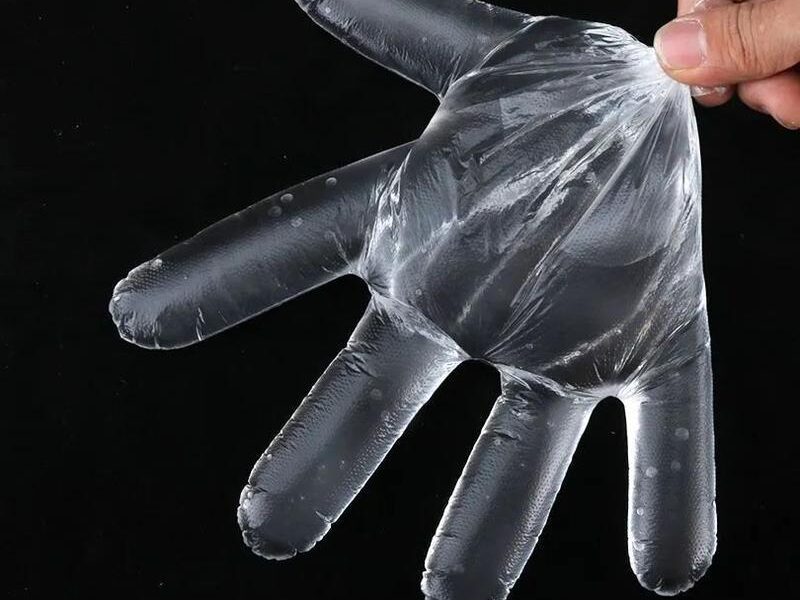1. Which Glove is More Elastic: PE or TPE?
Both PE and TPE gloves are plastic-based, but their elasticity differs. Generally, plastic gloves have less elasticity compared to nitrile, latex, or PVC gloves due to their material properties. TPE gloves exhibit a higher elongation at break than PE gloves, making them more flexible. This difference in elasticity determines their suitability for various applications.
2. 4 Hidden Cost Factors
(1) Storage Conditions:
TPE gloves become brittle when stored in humidity >75%, while PE gloves have a higher threshold of 85%.
(2) Recycling Process:
TPE gloves can achieve an 82% recycling rate using thermal compression molding.
(3) Quality Variations:
Low-priced TPE gloves may contain excessive plasticizers, which can compromise safety.
(4) Usage Lifespan:
Recommended usage period:
TPE gloves: 7–10 days
PE gloves: 5–7 days
3. How to Choose Between PE and TPE Gloves?
(1) Match Requirements:
Select based on protection level, thickness needs, and application scenarios.
(2) Budget Planning:
Conduct cost assessments for procurement.
(3) Material Properties:
Choose based on physical/chemical resistance requirements.
4. Application Scenarios
(1) Food Service Industry:
PE gloves offer Grade 6 oil resistance, ideal for strong acid/alkali exposure.
(2) Industrial Manufacturing:
TPE gloves perform in -40°C to 120°C, while PE gloves suit -20°C to 80°C.
For further questions about gloves or production, please don’t hesitate to contact us at your convenience.





